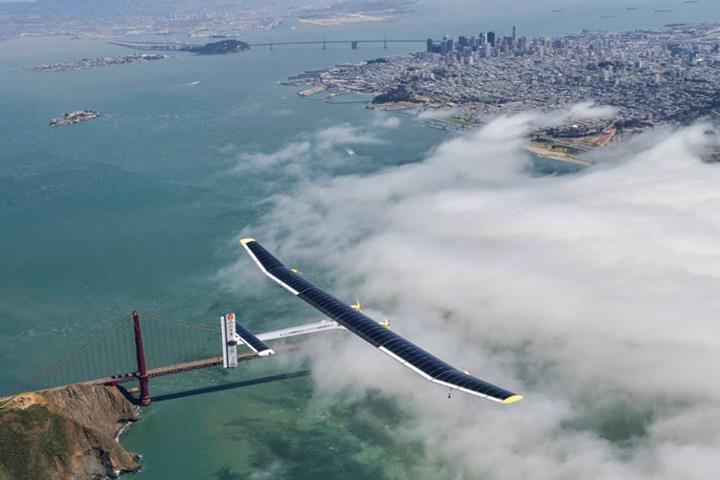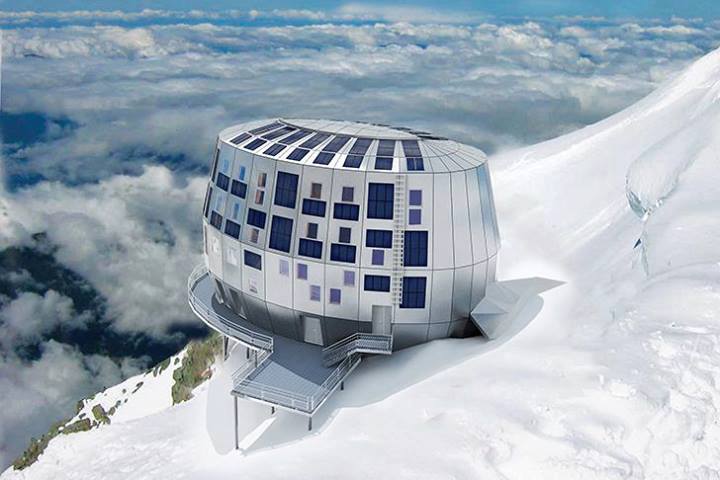5 Remarkable Uses of Solar

Solar has become the new norm and can be seen on rooftops and in large-scale commercial projects all over the world. It has become a key component in many fascinating projects that might give us a sneak peak at what the future holds. Here we’ll introduce five interesting solar projects that push the boundaries of technology.
1. Solar Boat “PlanetSolar“
Between September 2010 and May 2012, the MS Tûranor PlanetSolar completed the first trip around the world powered exclusively by solar energy. The catamaran has a total of 516 m² of photovoltaic surface (solar panels) which allow it to travel at an average speed of 5 knots (9.25 km/h or 5.7 mph). It is the biggest solar ship in the world and has an installed PV power of 93.5 kW (127.0 horsepower), enough to move its 89 tons (178,000 pounds) across the oceans, which can include a notable capacity of 60 people aboard the ship at the same time).
To overcome any potential obstacles, PlanetSolar also uses six blocks of lithium-ion battery to navigate through times of cloudy weather and rain.
2. Solar Plane “Solar Impulse”
Solar has pushed the boundaries of the aviation world. The solar plane Solar Impulse is “not designed to carry passengers, but to carry a message,” according to its designer Bertrand Piccard. The gigantic dimensions are tremendous – a wingspan of 63.4 m (208 ft) with 11,628 photovoltaics cells rated at 45 KW peak mean a solar surface of about 200 m² (2,152.8 ft²). The plane travels at a cruise speed of 70 km/h (43.5 mph) thanks to its four electric motors powered by four 21 kWh lithium-ion batteries which provide 7.5 kW (10 horsepower) each.
While the plane cannot travel the world without stopping, flying at an altitude of 12,000 m/39,370 ft (the same altitude passenger planes travel) for 36 hours has become a reality.
3. Solar Motorcycle “Lightning Superbike”
Everybody is a fan of speed records – and that’s why you have to know about this solar motorcycle which only uses the power of the sun. The project was realized by DC Solar Solutions and SMA and just recently beat the world speed record at around 302 km/h (189 mph) in the Mojave Desert in California (U.S.). To charge the batteries for its next ride, the bike uses a solar trailer equipped with SMA Sunny Island inverters.
Check out this short video documentary of the record breaking ride:
4. Solar Hotel Mt. Blanc
The solar hotel Refuge du Goûter in Saint-Gervais is located in the French Alps at an altitude of 3,835 m (12,582 ft). It can host up to 120 people and reservations are open to the public (price per night about €90). The building is powered by 70 m² (753.5 ft²) worth of solar panels as well as wind turbines and an emergency generator fueled by burning rapeseed oil. Snow melted by solar power will also fill the building’s 20,000 liter water tanks. Without a doubt this high-altitude hotel is both an eye catcher that offers a lot of comfort to its visitors and a prime example of how a sustainable solar project can be realized virtually anywhere in the world.
5. “Google Loon”
People are always online and on the move at the same time. For anybody who leaves the city areas with their Wi-Fi and fast mobile connections, dead zones and poor coverage can be become a problem and put a quick end to browsing on the Web. Google has introduced project Loon, which consists of huge networked balloons designed to fill in those Internet gaps. The potential is so huge that a broadbandlike Internet connection could be provided for two-thirds of the world.
The first tests have been run successfully as about 30 balloons provided Internet speed comparable to 3G at an altitude of about 19 km (62,336 ft). This height was chosen intentionally to get out of the way of birds and commercial flights. Each balloon is powered via solar panels, which takes around four hours to fully charge, with extra energy stored in a rechargeable battery.
Have you spotted other interesting solar projects or are you working on one that’s pushing the boundaries of technology? Let us know in the comments below.







Feel free to contribute!